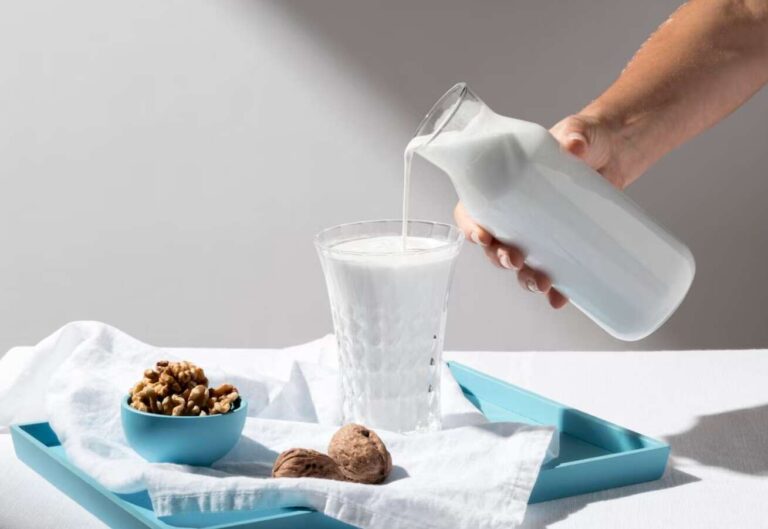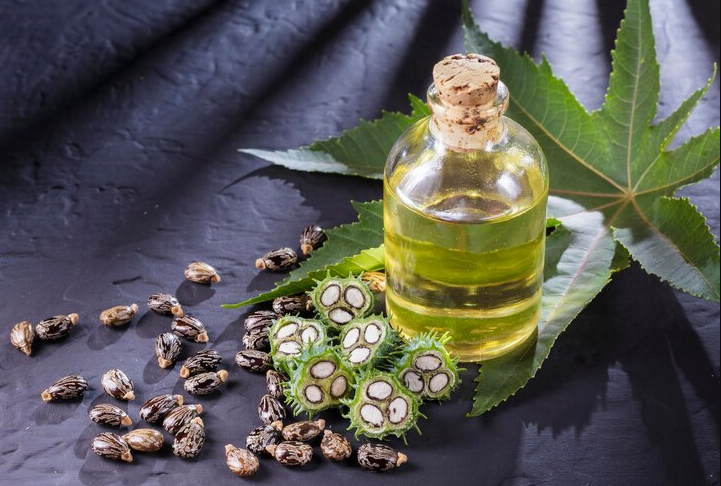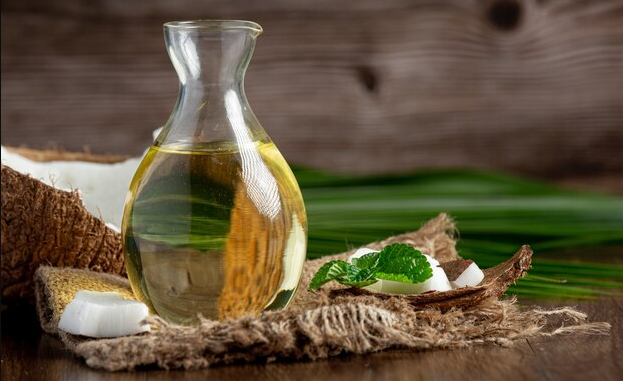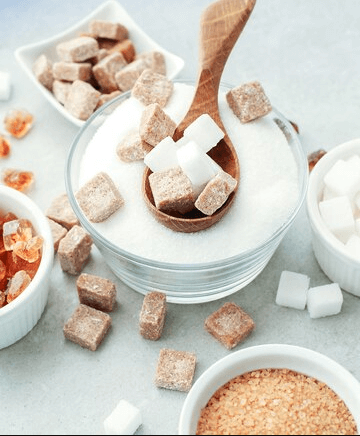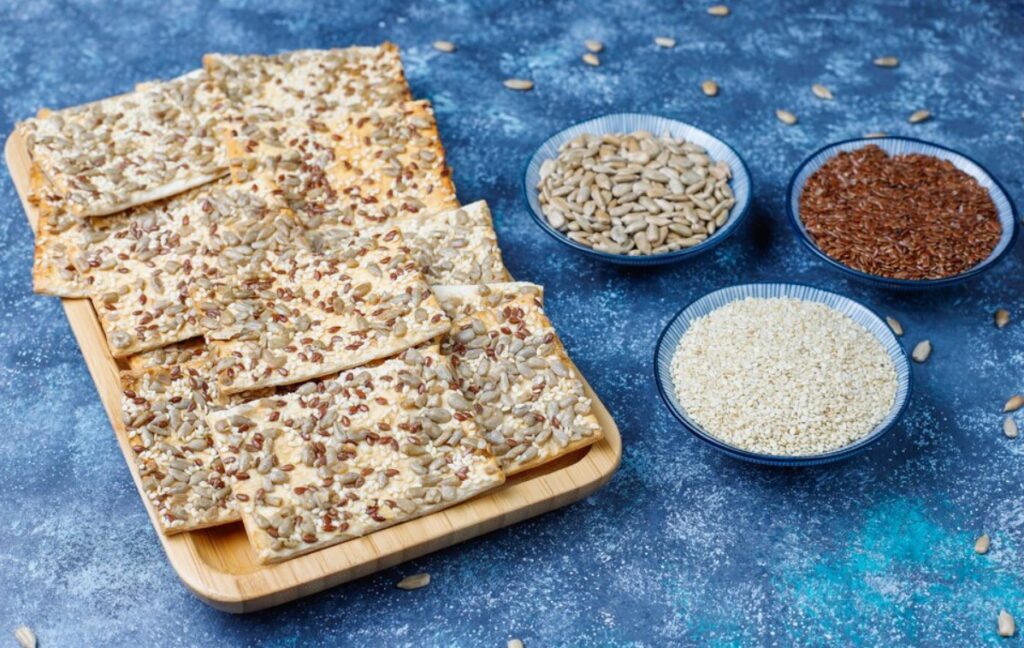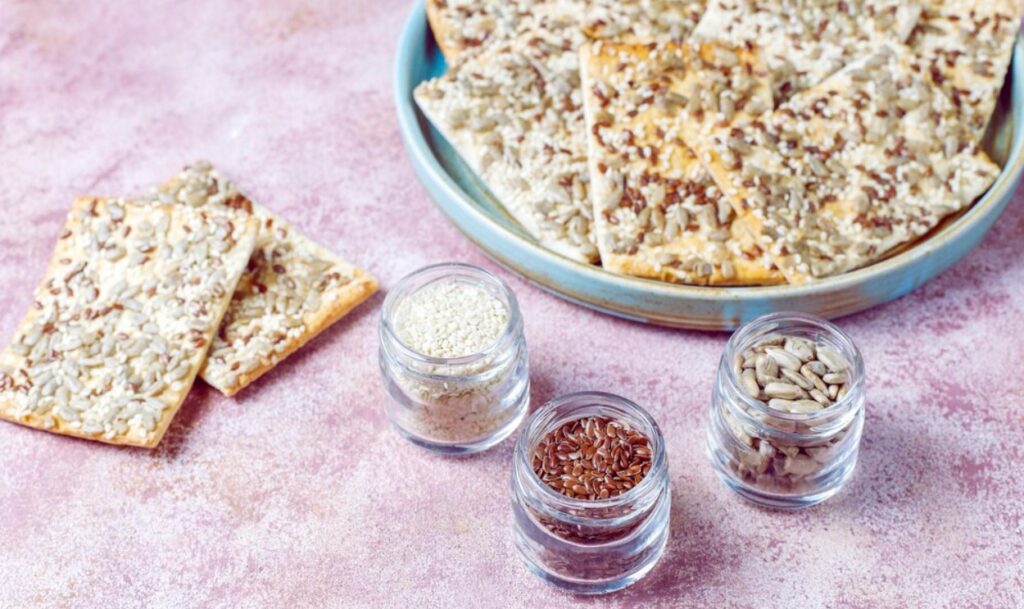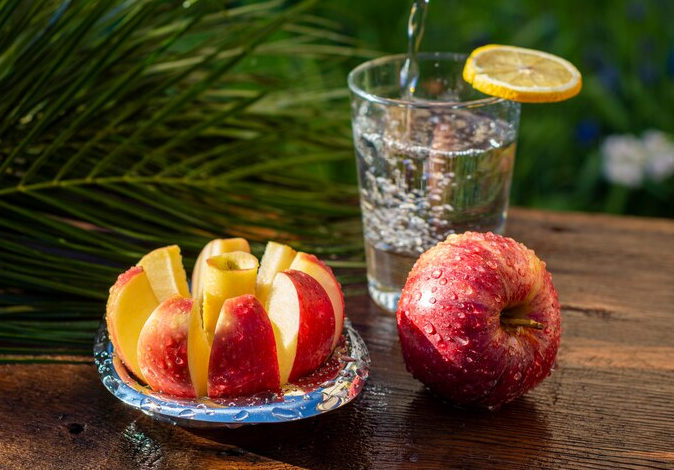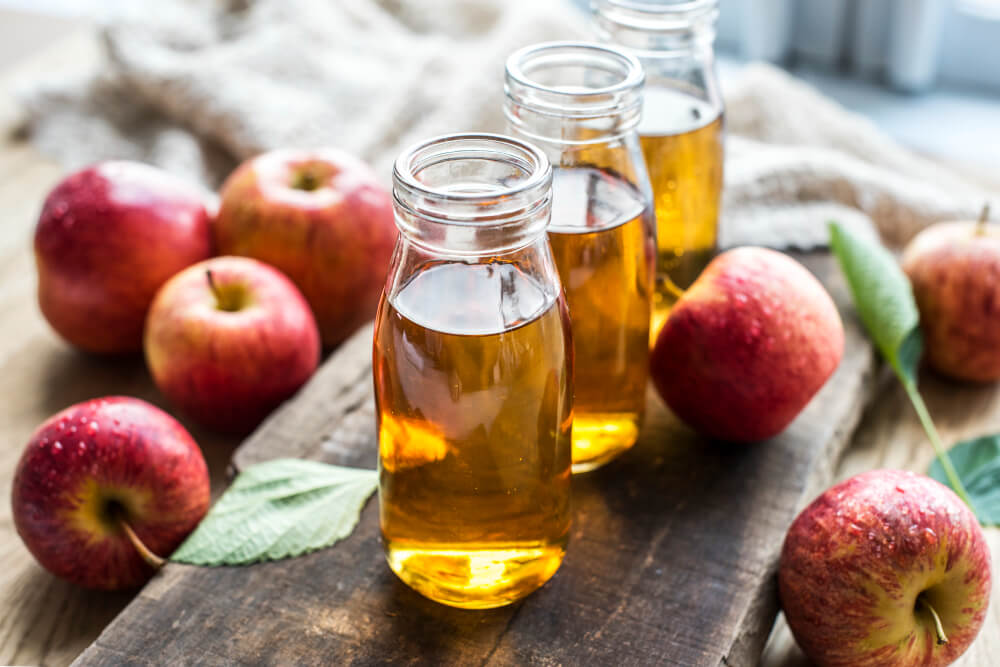The question “Is milk healthy?” has sparked considerable debate in recent years. For centuries, milk has been considered a staple of the human diet, praised for its rich nutrient profile, including calcium, protein, and vitamins. It has long been celebrated as an essential food for growing children and a key component of a balanced diet.
However, in today’s health-conscious world, this once-unquestioned belief is now being challenged. With the rise of plant-based diets, concerns over lactose intolerance, and growing awareness of potential links between milk consumption and certain health risks, milk’s reputation is far from clear-cut.
This growing controversy stems from a combination of scientific studies, shifting dietary trends, and increasing awareness of the ethical and environmental implications of dairy production. For some, milk is a superfood that promotes bone health, muscle recovery, and overall wellness. For others, it is a source of inflammation, digestive issues, and potential harm to heart health.
So, is milk healthy? Let’s explore the evidence to uncover the truth behind the benefits and risks of this age-old food.
What’s in Milk? Understanding the Nutritional Profile

Milk is often celebrated for its impressive nutritional profile, making it a popular choice for those looking to boost their intake of essential nutrients. Whether you drink it to support bone health, muscle recovery, or overall well-being, milk offers a variety of macro- and micronutrients.
Macronutrients
- Protein: Milk is a great source of high-quality protein, which is vital for muscle repair and growth. A cup of whole milk provides about 8 grams of protein, making it an excellent choice for post-workout recovery.
- Fat: The fat content in milk varies depending on the type. Whole milk contains around 8 grams of fat per cup, while reduced-fat (2%) milk has about 5 grams, and skim milk has almost none. The fat in milk is primarily saturated, which has been a point of concern regarding heart health, though recent studies show that its impact may not be as significant as once thought.
- Carbohydrates: Milk contains natural sugar in the form of lactose, providing about 12 grams of carbohydrates per cup. For individuals who are lactose intolerant, this can cause digestive discomfort, but lactose-free milk offers a solution.
Micronutrients
- Calcium: One of the most well-known benefits of milk is its high calcium content, with one cup providing approximately 300 mg—about 30% of the daily recommended intake. Calcium is crucial for bone health, helping to prevent conditions like osteoporosis.
- Vitamin D: Many milk products are fortified with vitamin D, which helps the body absorb calcium more effectively and supports immune function.
- B Vitamins: Milk contains a range of B vitamins, including B12, which supports nerve function, and riboflavin (B2), essential for energy production.
- Potassium: With about 300 mg of potassium per cup, milk helps maintain healthy blood pressure levels and supports proper muscle and nerve function.
Comparison with Plant-Based Alternatives: While dairy milk is nutrient-dense, plant-based alternatives have become increasingly popular. Almond, soy, oat, and coconut milk are the most common substitutes, but their nutritional profiles differ. For example, almond milk is typically lower in protein, while soy milk provides a comparable amount to cow’s milk. Most plant-based milks are fortified with calcium and vitamin D to mimic the benefits of dairy. However, they often contain added sugars and lack the natural protein found in dairy milk, making them less suitable for those seeking to meet their protein needs.
When considering whether milk is healthy, it’s essential to understand these nutritional differences to choose the best option for your individual needs.
Health Benefits of Milk
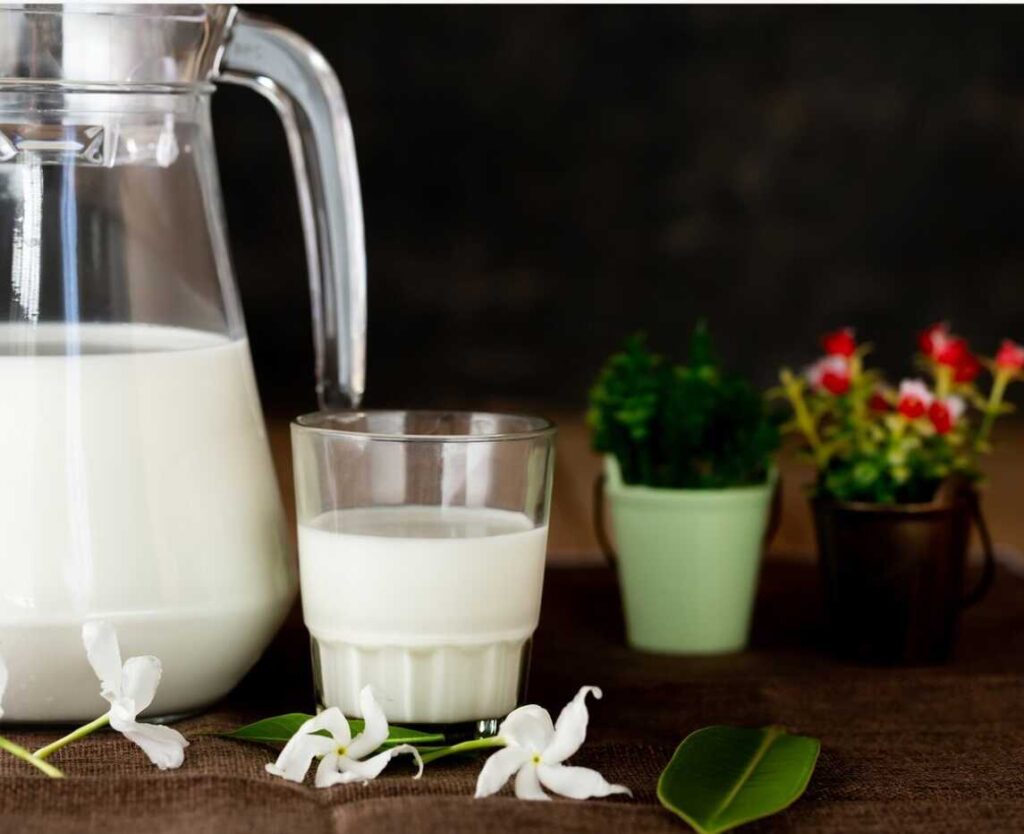
Milk has long been celebrated for its numerous health benefits, making it an integral part of many diets worldwide. From promoting bone health to supporting muscle recovery, milk offers a wide range of advantages that contribute to overall well-being. Here, we’ll explore the key health benefits of milk and how it can play a role in supporting various aspects of health.
Bone Health: The Role of Calcium and Vitamin D
One of the most well-known benefits of milk is its role in promoting bone health. Milk is an excellent source of calcium, a mineral essential for building and maintaining strong bones. A single cup of milk provides about 30% of the daily recommended intake of calcium, making it one of the best dietary sources of this vital nutrient. Calcium helps in the mineralization of bones, improving their density and strength.
In addition to calcium, many types of milk are fortified with vitamin D, which is crucial for the absorption of calcium. Vitamin D helps the body process calcium more effectively, ensuring that it reaches the bones where it is most needed. The combination of calcium and vitamin D in milk can play a significant role in preventing bone-related conditions such as osteoporosis, a condition characterized by weakened bones that are more prone to fractures.
Muscle Growth and Recovery: High-Quality Protein
Another key benefit of milk lies in its high-quality protein content, which makes it an excellent choice for muscle growth and recovery. Protein is essential for repairing and rebuilding muscles after exercise, and milk provides all nine essential amino acids necessary for this process. A cup of whole milk offers about 8 grams of protein, while low-fat and skim milk provide similar amounts.
Milk’s protein is particularly beneficial post-workout because it contains a mix of casein and whey proteins. Whey protein is quickly digested and absorbed, making it ideal for immediate recovery, while casein is digested more slowly, providing a sustained release of amino acids to muscles over several hours. This makes milk an effective recovery drink for athletes and fitness enthusiasts looking to optimize muscle repair after exercise.
Weight Management: Promoting Satiety and Supporting Metabolic Rate
Milk can also be beneficial for weight management. One of the reasons milk is helpful in controlling appetite is its ability to promote satiety, or the feeling of fullness. The protein and fat content in milk help to keep you satisfied for longer, potentially reducing the desire for unnecessary snacking and helping with portion control.
In addition, some studies suggest that milk and dairy products may have a role in boosting metabolic rate. The calcium in milk may help to enhance fat breakdown, and the protein content can increase thermogenesis—the process by which the body burns calories to digest food. Including milk in your diet as part of a balanced approach to weight management can contribute to better control of your appetite and a more efficient metabolism.
Dental Health: Preventing Tooth Decay
Milk also plays a role in promoting dental health. The calcium and phosphorus in milk help to strengthen tooth enamel, the hard outer layer of the teeth that protects against decay. Additionally, milk has been found to neutralize acids in the mouth that contribute to tooth erosion. Studies have shown that milk can help reduce the risk of cavities by buffering acid production and fostering an environment where teeth can remineralize.
Moreover, milk contains lactoferrin, an antimicrobial protein that helps prevent the growth of harmful bacteria in the mouth. By consuming milk regularly, individuals may lower their risk of cavities, gum disease, and other dental issues.
Is Dairy Good for You?
While there are some health risks associated with dairy (discussed in a later section), the overall benefits of milk for bone health, muscle recovery, weight management, and dental health make it a valuable addition to many diets. For individuals who can tolerate it, milk is a nutrient-dense food that supports both immediate and long-term health.
Potential Risks and Controversies
While milk offers several health benefits, it’s not without its controversies. For some, milk consumption can pose significant health risks or ethical concerns. From lactose intolerance to environmental impacts, there are several important considerations to keep in mind when deciding whether to include milk in your diet. In this section, we’ll explore some of the potential risks associated with drinking milk and the controversies that surround it.
Lactose Intolerance and Dairy Allergies: Prevalence and Symptoms
One of the most common issues related to milk consumption is lactose intolerance. This condition occurs when the body is unable to properly digest lactose, the natural sugar found in milk. Lactose intolerance is prevalent worldwide, particularly among populations of East Asian, African, and Native American descent, where up to 70-90% of individuals may be affected. Symptoms of lactose intolerance include bloating, diarrhea, cramps, and gas after consuming dairy products.
In contrast, dairy allergies are less common but can be more severe. A dairy allergy occurs when the body’s immune system reacts to proteins found in milk, such as casein and whey. This can lead to symptoms ranging from mild rashes or digestive issues to life-threatening anaphylaxis in rare cases. While lactose intolerance is generally manageable through diet adjustments or lactase supplements, a dairy allergy requires complete avoidance of dairy products.
For those affected by lactose intolerance or dairy allergies, consuming milk or milk-based products can lead to significant discomfort and health complications. However, many lactose-free milk options, as well as non-dairy alternatives like almond or oat milk, are available on the market, providing individuals with safe alternatives.
Heart Disease Concerns: Saturated Fat Content and Mixed Research Findings
Another concern when it comes to milk is its saturated fat content. Whole milk contains approximately 5 grams of saturated fat per cup, which has been traditionally linked to an increased risk of heart disease. High intake of saturated fats is thought to raise LDL (low-density lipoprotein) cholesterol levels, which can contribute to the buildup of plaque in the arteries, increasing the risk of heart attack and stroke.
However, the relationship between saturated fat and heart disease has become more complex in recent years. While some studies continue to show a potential link, other research suggests that the connection between dairy fat and heart disease might not be as strong as once believed. Recent studies have indicated that the consumption of dairy fat may not significantly affect heart disease risk, and some dairy products, such as yogurt and fermented milk, may even have protective effects on cardiovascular health. As the science evolves, it’s clear that individual factors like genetics, overall diet, and lifestyle play a crucial role in how saturated fat impacts heart health.
Cancer Risks: Hormones in Dairy and Certain Cancers
Cancer risks associated with milk consumption have also been a subject of debate. Some research suggests that hormones found in dairy—particularly those naturally occurring in milk, such as estrogen—could potentially influence the development of certain cancers, such as prostate cancer and breast cancer.
In particular, studies have shown that higher levels of estrogen in milk might contribute to hormone-related cancers, especially for individuals with a predisposition to these conditions. Dairy products are also linked to increased levels of insulin-like growth factor (IGF-1), a protein that plays a role in cell growth and has been associated with an increased risk of cancers like colorectal cancer.
While the evidence is mixed, some health experts suggest moderating dairy consumption, particularly for individuals who are at higher risk for hormone-sensitive cancers. More research is needed to fully understand the connection between dairy consumption and cancer risk, but it’s a consideration for those looking to minimize potential health risks.
Dairy and Inflammation: Autoimmune Concerns and Anecdotal Reports
Another area of concern is dairy and inflammation. Some individuals report increased inflammation and symptoms related to autoimmune conditions, such as rheumatoid arthritis, after consuming dairy products. While research on this topic is limited, some studies suggest that certain proteins in milk, like casein and whey, might trigger inflammatory responses in sensitive individuals.
Additionally, many people with autoimmune diseases or other chronic conditions claim that eliminating dairy from their diet can help reduce symptoms of inflammation, such as joint pain and swelling. However, the scientific community has not reached a consensus on the role dairy plays in inflammation, and much of the evidence is anecdotal. It’s important to note that while dairy may contribute to inflammation in some individuals, it doesn’t necessarily affect everyone in the same way.
Ethical and Environmental Considerations: Animal Welfare and Carbon Footprint
Beyond health concerns, there are growing ethical and environmental considerations related to milk consumption. Animal welfare is a primary concern for many individuals who choose to avoid dairy. Modern dairy farming practices, which often involve intensive confinement and the use of hormones and antibiotics, have been criticized for their impact on the welfare of cows. Animal rights advocates argue that the dairy industry contributes to the exploitation of animals, raising ethical questions about the consumption of dairy products.
From an environmental perspective, dairy farming has a significant carbon footprint. Dairy production is resource-intensive, requiring large amounts of water and feed for cows, and it contributes to greenhouse gas emissions, particularly methane, a potent climate pollutant. As awareness of climate change grows, many people are turning to plant-based alternatives like almond, oat, and soy milk to reduce their environmental impact.
Conclusion: Weighing the Risks
In conclusion, while milk offers numerous health benefits, such as supporting bone health, muscle recovery, and dental hygiene, it also comes with potential risks and controversies. Individuals with lactose intolerance or dairy allergies, those concerned about heart disease, cancer, or inflammation, and those who prioritize ethical and environmental considerations may need to think carefully about their milk consumption. As always, it’s important to listen to your body and consider your unique health needs when making dietary choices.
Who Should or Shouldn’t Drink Milk?
Milk is a nutrient-packed beverage that offers a wide range of health benefits. However, it may not be suitable for everyone. Whether you should include milk in your diet depends on your individual health needs, dietary preferences, and potential health concerns. Let’s explore who may benefit from milk, who should limit or avoid it, and some popular plant-based alternatives.
Individuals Who May Benefit from Milk
1. Growing Children and Adolescents: Milk is an excellent source of calcium, protein, and vitamins D and B12, all of which are essential for growing bones, muscles, and overall development. Including milk in the diet during the formative years helps ensure proper growth and the building of strong bones.
2. Athletes and Active Adults: For those who engage in regular physical activity, milk can be a beneficial post-workout recovery drink. Its combination of protein, particularly whey and casein, makes it ideal for muscle repair and recovery. The protein content in milk also helps with muscle building and maintaining lean muscle mass.
3. Individuals Focused on Bone Health: Milk’s high calcium and vitamin D content makes it an excellent choice for those concerned about maintaining strong bones and preventing osteoporosis, particularly in older adults. Calcium plays a vital role in maintaining bone density, while vitamin D helps the body absorb calcium effectively.
Who Should Limit or Avoid Milk?
1. Lactose Intolerance: One of the most common reasons to avoid milk is lactose intolerance. People with this condition lack the enzyme lactase, which is needed to break down lactose. Symptoms like bloating, diarrhea, and cramps occur when lactose is not properly digested. Individuals with lactose intolerance can often tolerate small amounts of dairy or opt for lactose-free milk alternatives.
2. Dairy Allergy: A dairy allergy occurs when the immune system reacts to proteins found in milk, such as casein and whey. This can lead to mild to severe allergic reactions, including hives, difficulty breathing, or even anaphylaxis. Individuals with a dairy allergy must completely avoid all dairy products.
3. Acne-Prone Skin: Some studies suggest that milk consumption may be linked to an increase in acne, particularly in individuals who are prone to breakouts. This may be due to the hormones and growth factors present in milk, which can influence sebum production and exacerbate acne in sensitive individuals. If acne is a concern, some people find that cutting back on dairy helps improve their skin.
4. Ethical and Environmental Considerations: Those who prioritize animal welfare or environmental sustainability may choose to limit or avoid dairy due to concerns over factory farming practices and the environmental impact of dairy production, such as high water usage and methane emissions.
Alternatives: Plant-Based Milk Options
For those who choose not to drink cow’s milk, plant-based milk offers a variety of options. While they vary in nutritional content, many plant-based milks are fortified with nutrients like calcium, vitamin D, and vitamin B12 to match the benefits of dairy milk.
1. Almond Milk: Low in calories and naturally free from lactose and cholesterol, almond milk is a popular choice. However, it contains little protein compared to cow’s milk (about 1 gram per cup) and may have added sugars, depending on the brand.
2. Soy Milk: Soy milk is one of the closest plant-based substitutes to cow’s milk in terms of protein content, offering about 8 grams of protein per cup. It’s a good option for those looking for a plant-based alternative that closely mimics the nutritional profile of dairy milk.
3. Oat Milk: Oat milk has gained popularity due to its creamy texture and naturally sweet flavor. It’s often fortified with nutrients like calcium and vitamin D. However, oat milk tends to be higher in carbohydrates and sugar than other plant-based options, which may not make it the best choice for those managing their blood sugar levels.
4. Coconut Milk: Coconut milk is a rich, creamy alternative with a distinctive flavor. It is low in protein but contains healthy fats, particularly medium-chain triglycerides (MCTs), which may have metabolism-boosting effects. However, it’s often higher in calories than other plant-based milks.
Each alternative comes with its pros and cons, and choosing the best one depends on personal health goals and dietary preferences. For example, if you’re looking for high protein, soy milk is a strong choice, whereas if you need a low-calorie option, almond milk might be the way to go.
Expert Recommendations and Guidelines
When it comes to milk consumption, health experts and organizations offer guidance based on current scientific research. Recommendations from reputable organizations like the U.S. Department of Agriculture (USDA), the American Heart Association (AHA), and the World Health Organization (WHO) can help inform decisions about how much dairy should be included in a balanced diet.
Recommendations from Leading Health Organizations
The USDA recommends that adults consume 3 cups of dairy per day, which includes milk, yogurt, and cheese, as part of a balanced diet. Dairy is an excellent source of essential nutrients, particularly calcium, vitamin D, and protein, which are important for maintaining strong bones, supporting muscle health, and overall well-being.
The AHA advises that when consuming dairy, individuals should choose low-fat or fat-free options to reduce the intake of saturated fats, which can contribute to heart disease risk. The AHA also notes that dairy products provide important nutrients but should be consumed in moderation to balance out the rest of the diet.
The WHO acknowledges the benefits of dairy but also encourages people to consider alternatives if they are lactose intolerant, allergic, or follow a plant-based diet. They emphasize a well-rounded approach to nutrition, with dairy being one component of a broader, nutrient-rich diet.
Daily Intake Suggestions by Age Group
- Children (2-3 years): 2 cups of dairy
- Children (4-8 years): 2.5 cups of dairy
- Adolescents (9-18 years): 3 cups of dairy
- Adults (19 years and older): 3 cups of dairy
These guidelines ensure that individuals get enough calcium and other essential nutrients to support bone growth and overall health.
The Importance of Balance and Moderation
While dairy can offer numerous health benefits, it is important to emphasize balance and moderation. Consuming too much milk or dairy can contribute to excessive calorie intake, particularly when it comes to full-fat options. Ensuring a diverse diet that includes a variety of nutrient-dense foods is key to long-term health.
Ultimately, the question of “Is dairy good for you?” depends on individual health needs and goals. Whether you choose to include milk in your diet or prefer plant-based alternatives, the goal should be a balanced, nutrient-rich approach to eating that supports overall well-being.
FAQs
In this section, we’ll address some of the most common questions people have about milk, its health implications, and whether it’s the right choice for their diet.
1. Is it okay to drink milk every day?
Yes, for most people, drinking milk every day is safe and can be beneficial, as long as it is part of a balanced diet. Milk is rich in essential nutrients like calcium, vitamin D, and protein, which support bone health, muscle growth, and overall well-being. However, it’s important to consume milk in moderation and choose lower-fat options if you’re concerned about saturated fats. If you’re lactose intolerant or have a dairy allergy, you should either avoid milk or opt for alternatives like lactose-free milk or plant-based options.
2. Is plant-based milk healthier than dairy milk?
Whether plant-based milk is healthier than dairy milk depends on your specific health needs. Plant-based milks, such as almond, soy, and oat milk, are naturally free from cholesterol and lactose, making them a great option for those with lactose intolerance or those looking to reduce their animal product consumption. Many plant-based milks are also fortified with nutrients like calcium and vitamin D to match dairy’s nutritional profile. However, some plant-based milks are lower in protein compared to dairy milk, with soy milk being one of the best plant-based options for protein content.
That said, dairy milk contains more naturally occurring nutrients like vitamin B12 and riboflavin, which are important for energy production and red blood cell health. The key to choosing between dairy and plant-based milk is considering your nutritional needs, taste preferences, and dietary restrictions.
3. Does milk really cause acne?
The link between milk and acne is not fully understood, but some studies suggest that milk, particularly skim milk, may be associated with an increase in acne. This may be due to the hormones present in milk, such as insulin-like growth factor 1 (IGF-1), which can stimulate oil production in the skin, leading to clogged pores and acne. However, the evidence is mixed, and not everyone who consumes milk will experience acne. If you’re prone to breakouts, it may be worth trying to eliminate dairy from your diet to see if your skin improves.
4. What’s the best type of milk for weight loss?
If weight loss is your goal, skim milk or low-fat milk may be the best options. These types of milk have fewer calories and less saturated fat compared to whole milk, making them a better choice for those managing their calorie intake. Additionally, unsweetened plant-based milks like almond or oat milk are also low in calories and can be a good choice for weight loss. Just be mindful of added sugars in flavored milk or sweetened plant-based milk, as they can increase calorie content.
Ultimately, the best type of milk for weight loss depends on your overall dietary needs. Choosing lower-calorie and lower-fat milk options while maintaining a balanced diet will help support your weight loss goals.
5. Can milk cause inflammation?
For most people, milk does not cause inflammation and can be part of a healthy diet. However, for some individuals—especially those with dairy allergies or lactose intolerance—milk can trigger an inflammatory response. In people with autoimmune conditions, some studies suggest that certain proteins in milk (like casein) may contribute to inflammation, although this connection is not fully understood. If you notice that drinking milk causes symptoms like joint pain, digestive issues, or skin breakouts, it may be worth consulting a healthcare professional to determine if dairy is contributing to inflammation in your body.
For those with sensitivities, switching to lactose-free or plant-based alternatives might help reduce inflammation and improve overall health.
Conclusion
So, is milk healthy? The answer depends on your individual health goals, dietary needs, and how your body responds to dairy. On the positive side, milk is a nutrient-dense beverage that provides essential vitamins and minerals like calcium, vitamin D, and protein, which support bone health, muscle recovery, and overall wellness. For many, drinking milk daily offers significant health benefits, particularly for growing children, active adults, and those concerned about bone strength.
However, milk is not for everyone. Some individuals may experience digestive discomfort due to lactose intolerance or a dairy allergy. Additionally, there are concerns about the saturated fat content in whole milk, and some people may notice an increase in acne or inflammation from dairy consumption. Ethical and environmental considerations also play a role for those who prefer to avoid animal products.
Ultimately, the decision to include milk in your diet should be based on your personal health goals and dietary preferences. If you enjoy milk and tolerate it well, it can be a beneficial addition to a balanced diet. However, if milk doesn’t align with your needs or values, there are plenty of plant-based alternatives that can offer similar nutritional benefits.
The key is moderation and balance—find what works best for your body and lifestyle when considering is milk healthy for you.

